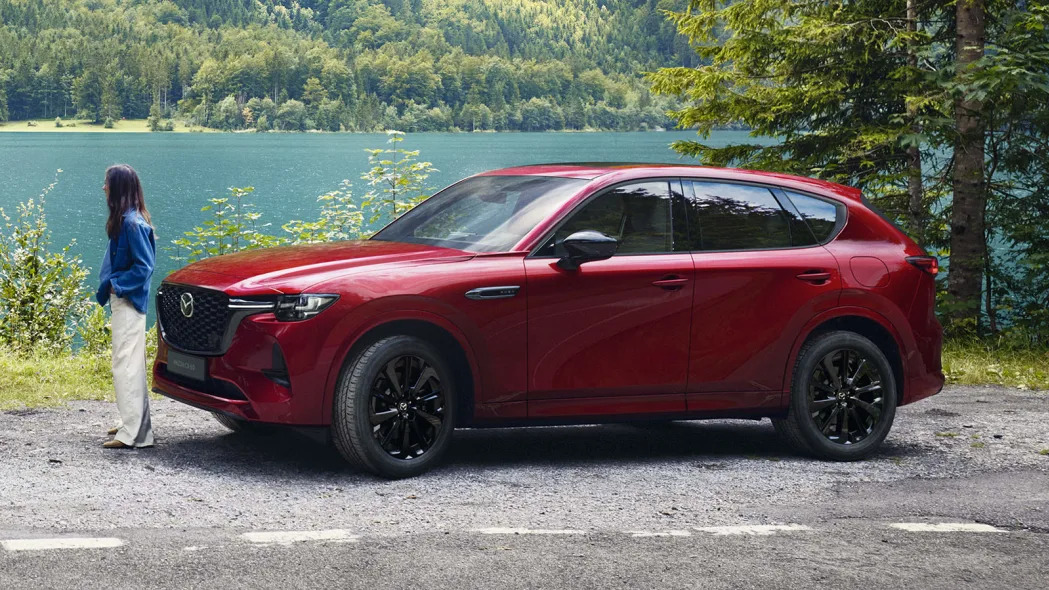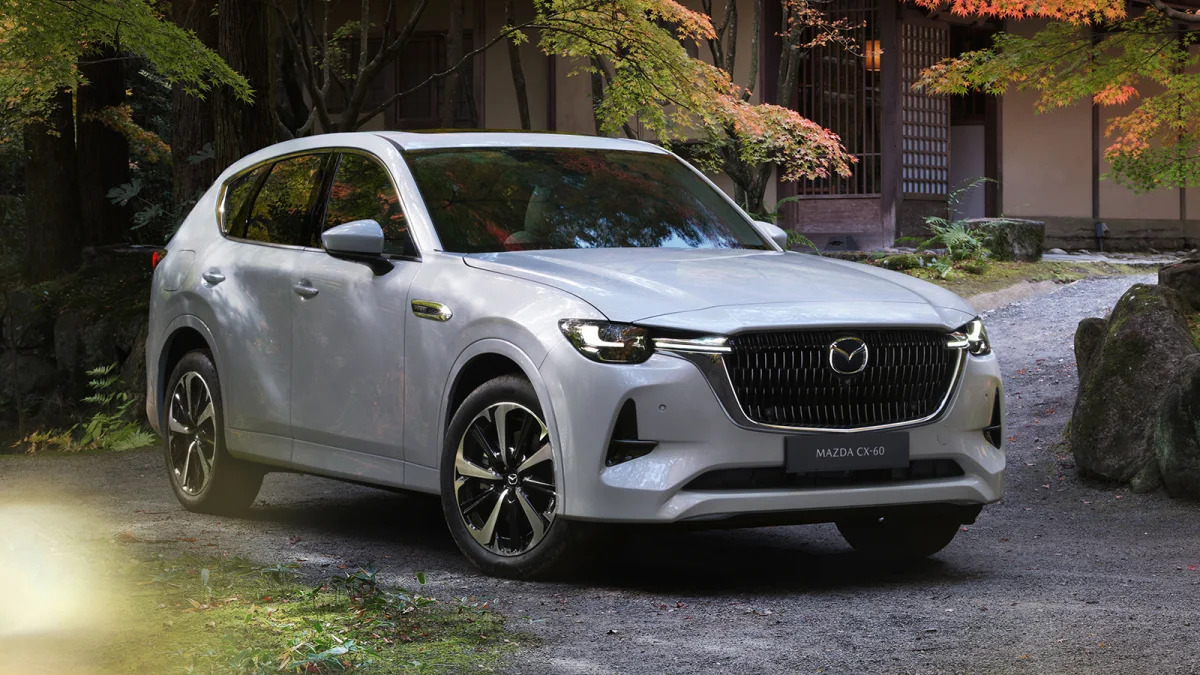The Mazda CX-60 is here, and while it looks like a typical Mazda SUV, it's much more than that. It's the first model to feature Mazda's long-awaited rear-drive platform. It also is Mazda's first plug-in hybrid model to go on sale, and it will eventually get Mazda's inline-six engines.
There's only one powertrain available at launch in the CX-60, and it's the plug-in hybrid. It combines the familiar Skyactiv-G 2.5-liter four-cylinder found in the CX-5, CX-50, CX-30, 6 and 3, but it's paired with a 134-horsepower electric motor. Total output is 323 horsepower and 368 pound-feet of torque, making it the most powerful production Mazda ever. It's apparently able to go from 0 to 62 mph in 5.8 seconds. The engine is mounted longitudinally, with the electric motor and a multi-plate clutch connecting it to the new eight-speed automatic transmission. While the CX-60's platform is rear-drive-based, the plug-in hybrid model is all-wheel-drive-only, with the front wheels engaged via a multi-plate clutch. There are multiple drive modes including Normal, Sport, Off-Road, Towing, and, for the PHEV version, an EV mode. Towing capacity is also just over 5,500 pounds.
As for the hybrid aspects, the CX-60 uses a 17.8-kWh battery pack. Mazda says it should return a range of 39 miles on electric power only. If the CX-60 is offered in the U.S., we expect that range to be smaller, since EPA ratings tend to be lower than WLTP results, which Mazda used for this statistic.

Eventually, the CX-60 will be offered with new six-cylinder engines, too. A naturally aspirated 3.0-liter Skyactiv-X engine and a turbocharged 3.3-liter diesel engine will be the offerings. Neither will be full hybrids, and we suspect it's a space issue with trying to fit the longer engines with an electric motor. They will each come with a 48-volt mild-hybrid assist, though. Output for these engines hasn't been announced, but Mazda did claim that the gas six-cylinder is as efficient as the Skyactiv-X four-cylinder. Both six-cylinder engines will also be available with rear-wheel drive instead of all-wheel-drive-only.
The powertrain isn't the only interesting mechanical feature of the CX-60. The suspension should also appeal to driving enthusiasts, as it features a double-wishbone design for the front, and multi-link independent for the rear. Mazda says this was possible due to switching to the longitudinal engine layout, which frees up space on either side of the engine.
As previously mentioned, the CX-60 looks quite similar to existing Mazda SUVs. It has a fairly clean body with few creases. The most notable difference is the new proportions with the long nose and dash-to-axle distance. It's particularly visible in profile. It's also notably larger than the current CX-5. It's about seven inches longer than the front-drive SUV, and it's a couple inches wider.

Inside, the CX-60 has a typically clean Mazda design with a low and wide dash. High-spec models feature stylish materials such Nappa leather, real maple wood trim, a fabric-wrapped dash with stylish Kakenui or hanging stitching that shows material under the threads. Standard is a 12.3-inch infotainment screen using the current Mazda infotainment system, but the company says that it runs faster and features new search functions. Apple CarPlay and Android Auto are included, too, and both are wireless now. Another interesting interior feature that will be available is a facial recognition system that will be able to set seating, climate and instrument settings to your preferences when it sees the driver sit in the car.
The CX-60 goes on sale in Europe this year. It won't come to the U.S., though, but we will get two SUVs built on the same platform: the two-row CX-70 and the three-row CX-90. The latter of which will replace the CX-9, and it will launch next year. In total, Mazda will launch five models on this rear-drive architecture, which includes the three aforementioned SUVs. We'll almost certainly get the four-cylinder plug-in hybrid powertrain, but the six-cylinder ones seem iffy. The Skyactiv-X four-cylinder never made it, here, so we don't know if the six-cylinder would, and diesel seems to very much be dead in the U.S.
Update (Mar. 8 2:49 p.m.): Added information about U.S. models based on the Mazda rear-drive architecture.
Related video:










Sign in to post
Please sign in to leave a comment.
Continue